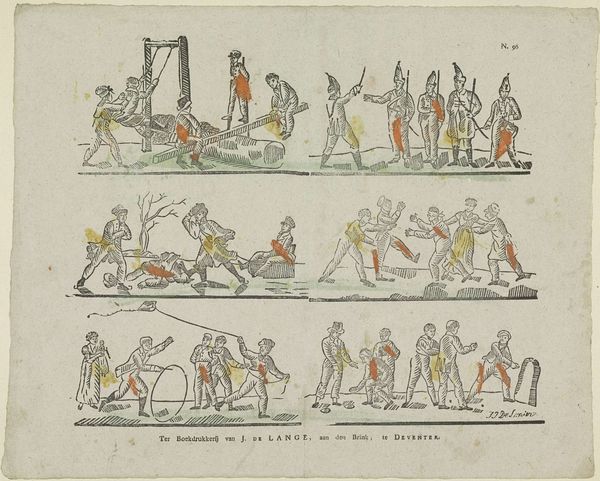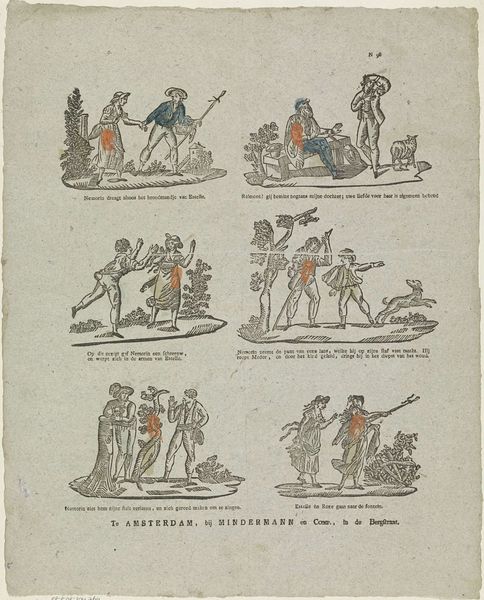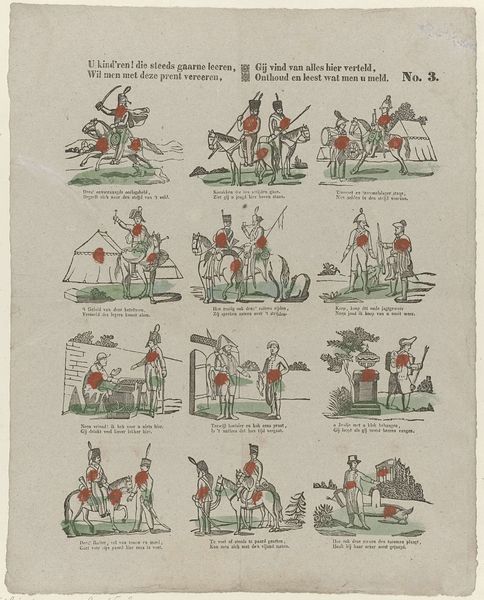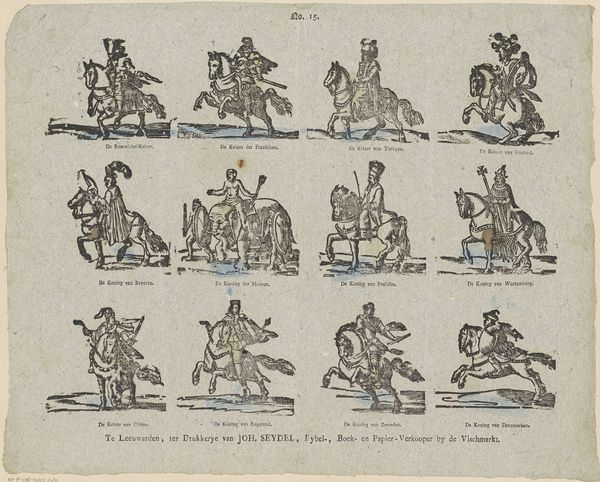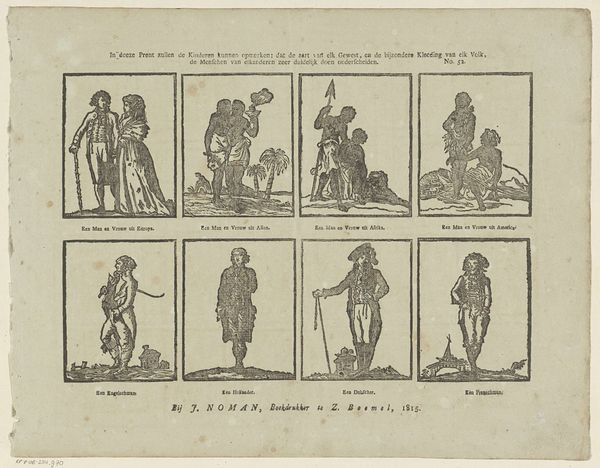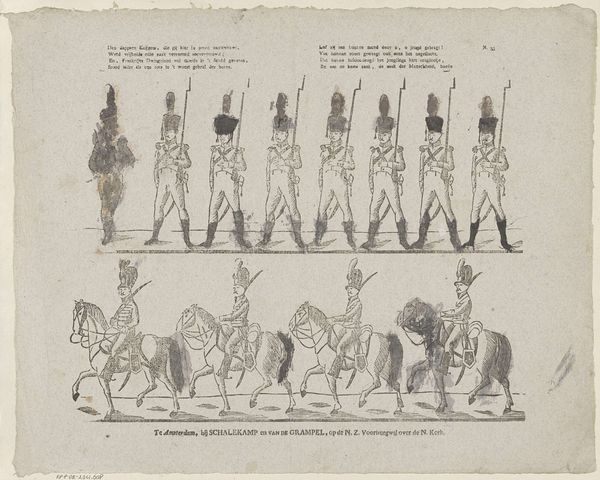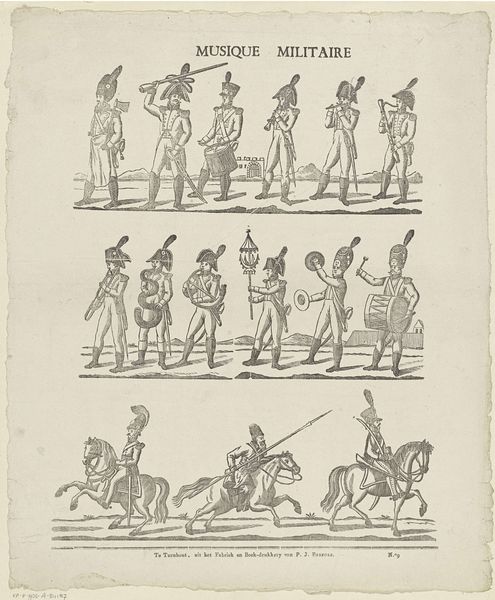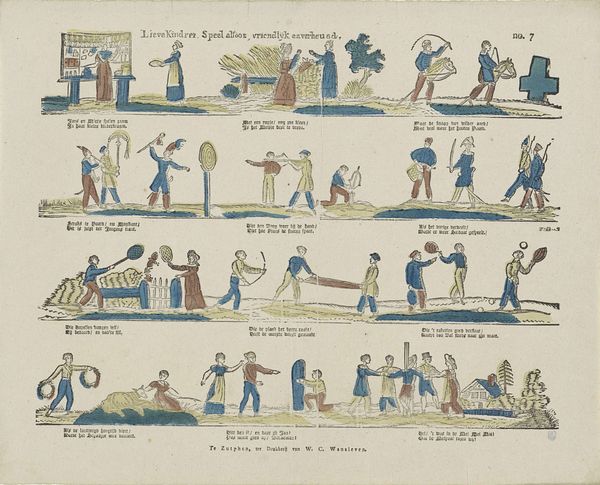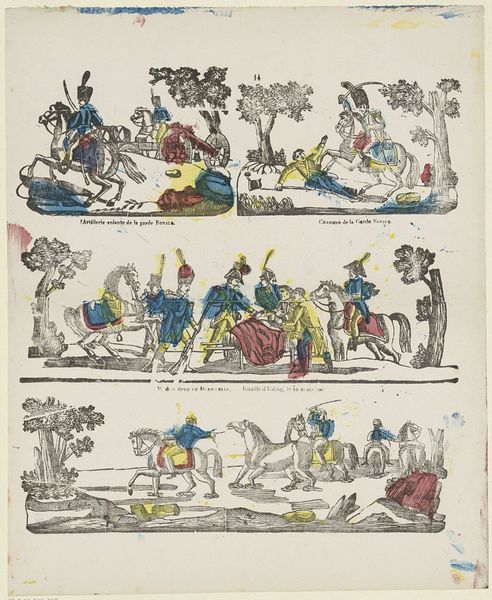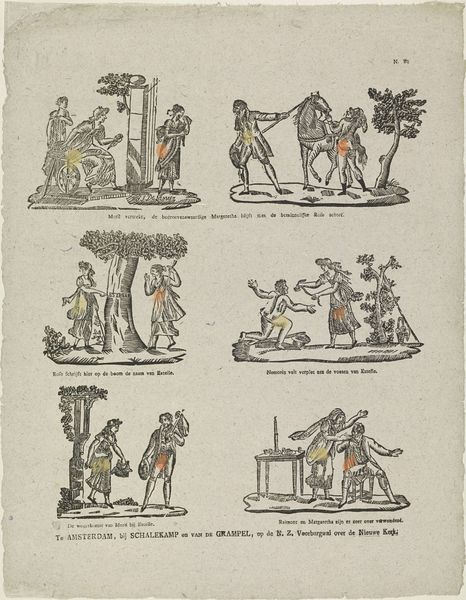
drawing, lithograph, print, paper
#
drawing
#
imaginative character sketch
#
quirky illustration
#
quirky sketch
#
narrative-art
#
lithograph
# print
#
sketch book
#
paper
#
personal sketchbook
#
sketchwork
#
folk-art
#
romanticism
#
sketchbook drawing
#
watercolour illustration
#
genre-painting
#
storyboard and sketchbook work
#
sketchbook art
Dimensions: height 335 mm, width 406 mm
Copyright: Rijks Museum: Open Domain
Curator: The work before us, "Kinderspelen," by I.I. de Lanier, dating from between 1822 and 1849, offers us a fascinating snapshot of childhood. The lithograph, printed on paper, is currently housed here at the Rijksmuseum. Editor: My first impression is one of contained energy. The compartmentalized composition gives order to the chaos of children at play. Curator: Precisely. Note how de Lanier utilizes the print medium, layering color modestly, which offers depth without sacrificing the inherent linearity of the medium. Consider the structural arrangement; each scene is a tableau. We can read each one for its unique perspective on youth. The artist deliberately contrasts them. Editor: But how deliberate is this effect? It appears more akin to illustrations from printed books. Each block possibly a scene meant to be cut out. Notice how economical de Lanier is with the use of materials – limiting the range of pigments, presumably due to the costs. This speaks volumes about the realities of artistic production in that era. What was the division of labor within the studio, or in the publisher's workshop for creating the original work from which this print was derived? Curator: A valid question. We could examine how the composition—the way the figures are arranged and their interactions—reflect a Romantic idealization of childhood innocence, even in scenes that depict rough-housing. Semiotics are useful here, allowing us to examine these symbols of play within the broader socio-cultural landscape. Editor: Indeed, but I wonder about the societal implications of the chosen pastimes. Are these activities expressions of class or regional distinctions? Consider how those materials would dictate the accessibility of leisure for some versus others. Look, also, at the traces of labor inherent in its construction – the very printing, cutting and selling processes behind these games being depicted, create and further those social structures. Curator: A fair point. The convergence of innocence and social construction gives depth. Analyzing De Lanier’s methods is enlightening, whether exploring pictorial order or class-based accessibility, these approaches augment the understanding. Editor: Agreed. Seeing both these structures enables appreciation.
Comments
No comments
Be the first to comment and join the conversation on the ultimate creative platform.
